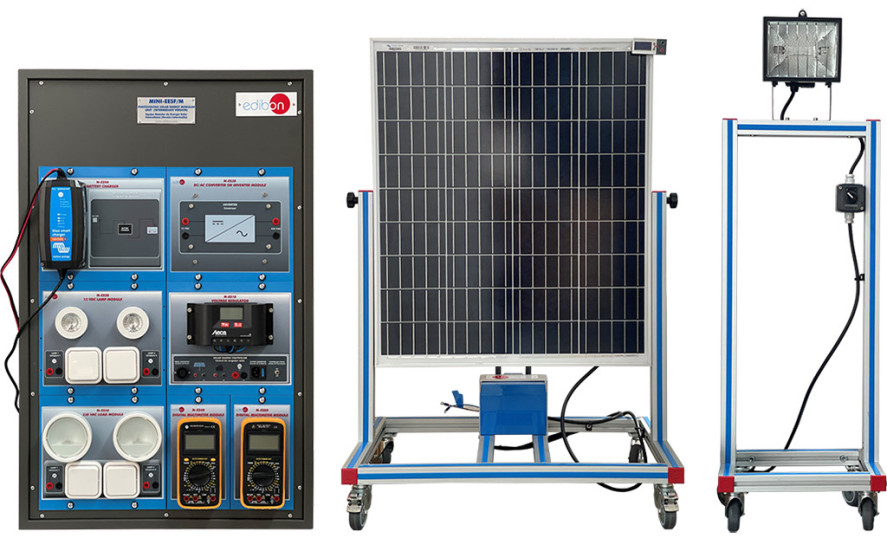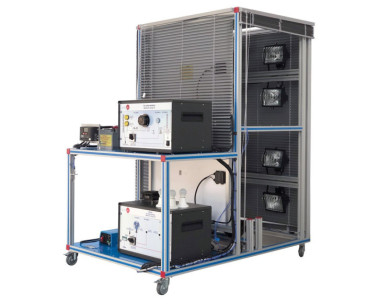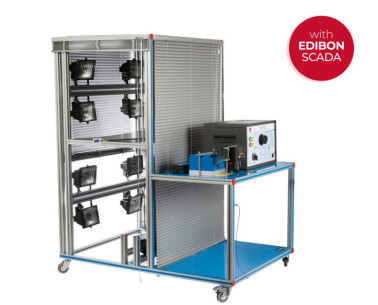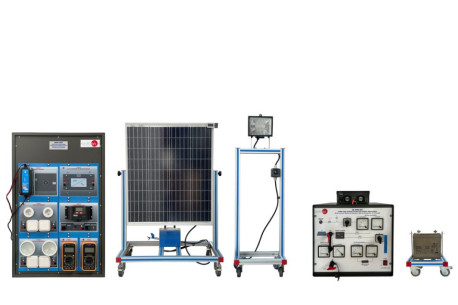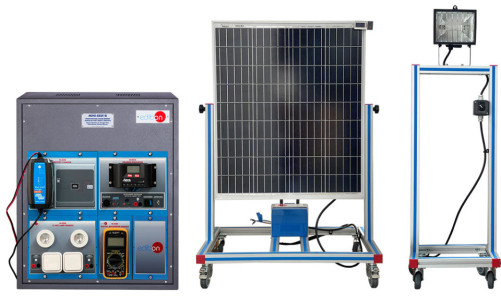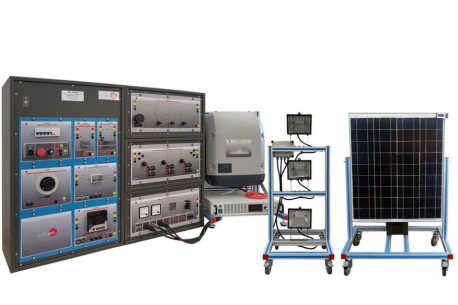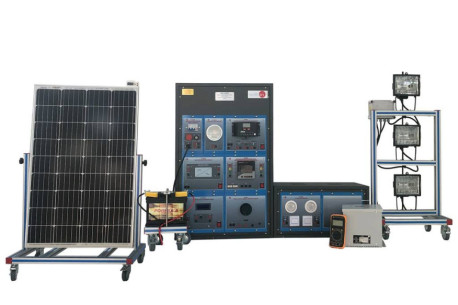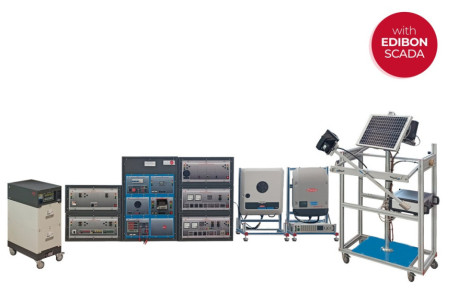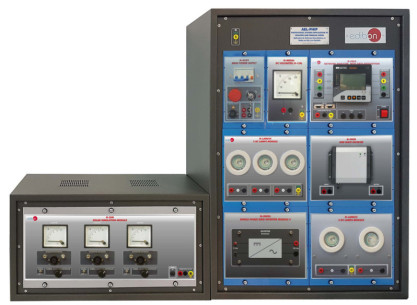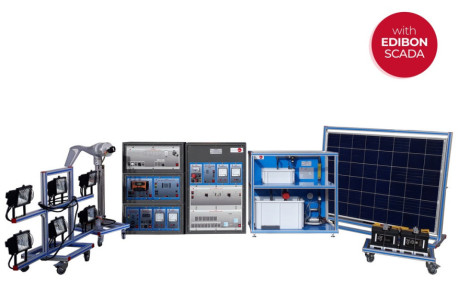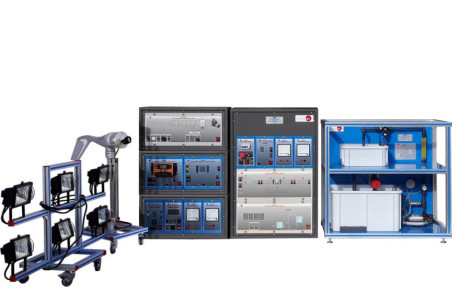Photovoltaic Solar Energy Modular Unit (Intermediate Version), "MINI-EESF/M", is a laboratory scaled unit designed to study all the parameters involved in the solar radiation direct conversion into electricity.
The unit is based on some application modules and photovoltaic solar panels assembled in mobile frames.
It is specially designed for the theoretical and practical study of the electrical installations with photovoltaic solar energy, the typical configurations used in photovoltaic installations and the operation of the different elements involved in the conversion.
The power obtained from the solar energy can be:
- Regulated to obtain a DC power to charge a battery, studying parameters such as solar module current output charge level, battery voltage, etc.
- Delivered to DC loads, studying parameters such as solar module current output and current consumption by the loads.
- Converted to AC power to be delivered to AC loads, studying parameters such as current consumption by the loads.
- Injected to the public grid, studying parameters such as output current and voltage of the simulated solar module, power supplied to the public grid, frequency and voltage of the grid, etc.
Two different versions are available with different practical possibilities and levels of difficulty: MINI-EESF and MINI-EESF/B.
 Preferensi cookie
Preferensi cookie

